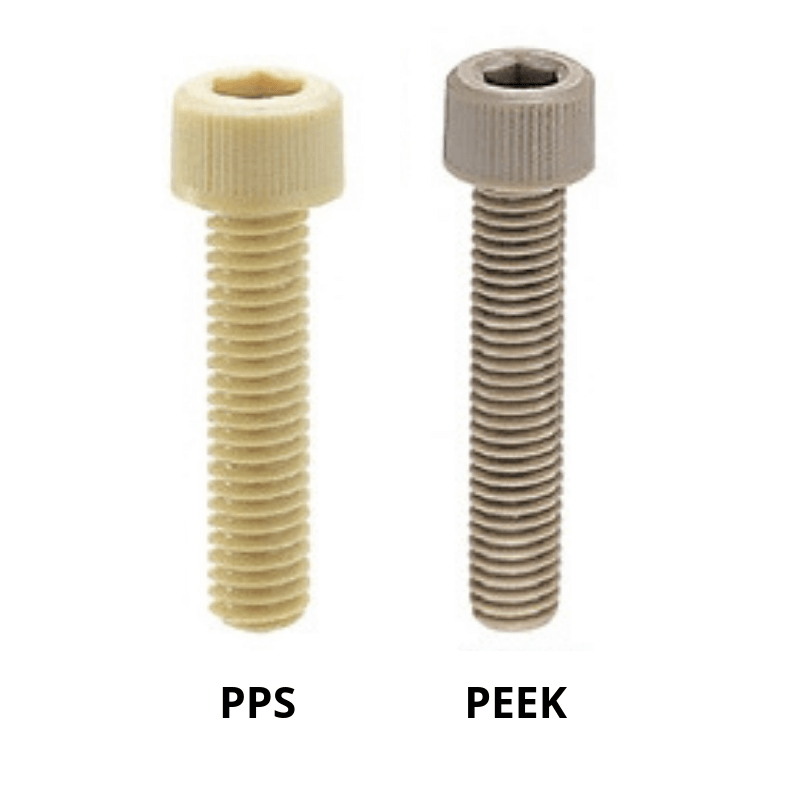When high-temperature performance is not a major concern, PPS can serve as a viable and economical alternative to PEEK. In this blog post, you will learn how these high performance engineering polymers are similar and where they differ (besides the price).
How PEEK and PPS Are Similar
PEEK and PSS are both semicrystalline high-performance thermoplastics, sharing properties such as:
- good chemical compatibility
- low friction
- good resistance to fatigue cracking
- excellent wear resistance
They are both well adapted to applications involving bearings (and are available in bearing grades with additives to further improve their properties), bushings, and seals. You can find both of these materials in many different industries, including oil and gas, food and dairy, and medical implants. In fact, both are available in FDA-approved grades.
Both PEEK and PPS are flame retardant, which can be important to certain applications, and are resistant to exposure to steam and hot water. Both materials are also dimensionally stable, possess a low coefficient of moisture absorption. They also possess similar coefficients of thermal expansion and have very good dielectric properties. In addition, both PEEK and PPS can be machined, injection molded or compression molded, which means there are options when it comes to how you want to have a PEEK or PPS part manufactured.
How PEEK and PPS Differ
The first main difference between PEEK and PPS that limits their interchangeability is maximum operating temperature: PEEK has a maximum continuous operating temperature of 480°F, compared to 430°F for PPS. This means that PPS is limited to environments and applications where the operating temperature remains below 430°F. The PV limit for PPS is lower than that of PEEK, which means that some bearing applications with a high PV value may be limited to PEEK.
PEEK has a slightly higher tensile strength, while PPS has better compressive strength. PEEK also has a higher Izod notch impact strength, with PEEK ranging from 1.5 to 2.2 ft-lb/in (depending on the grade) and PPS ranging from 0.38 to 1.5 ft-lb/in. While PEEK and PPS have similar chemical resistivity, PPS is the better option of the two and has no known solvents below 400°F.
The major difference between PEEK and PPS involves cost: PPS is substantially less expensive than PEEK, making it the preferred material for applications that do not involve extreme temperatures.
Conclusion
When high temperatures are not involved, PPS can quickly become a more attractive choice than PEEK because it has similar mechanical and thermal properties to PEEK but costs substantially less. PPS may actually offer better chemical compatibility, although its PV limit and strength may be less. So, in short, before you settle on PEEK as your material of choice, see if PPS might actually be suited to your design and serve as a more economical choice.
You may also enjoy these articles:
{{cta(’47cdaddc-bd7b-4dec-86c4-0ffce262e88c’,’justifycenter’)}}

